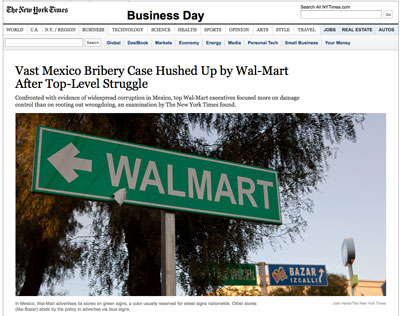To understand how deeply the demise of Piggly Wiggly Carolina impacted the south, the Post and Courier’s Tony Bartelme interviewed over 50 of the grocery chain’s former employees. What he discovered was anger, betrayal and grief directed at the company’s executives, who had long cited a changing retail landscape for the business’s problems. Instead, Bartelme learned that their own greed had led to the iconic brand’s collapse. Here’s how he did it.
Mention the grocery chain’s name in the Southeast, and you’ll likely get a smile and a wistful story about their “Pig.”
Piggly Wiggly Carolina was the nation’s largest franchiser of Piggly Wigglys, with more than 100 stores in the Carolinas and Georgia. So when the company went belly up, its loss was deeply felt.
Over the past few years, The Post and Courier covered Piggly Wiggly Carolina’s slow-motion collapse. We dutifully cited executives’ explanations that outside forces – Walmart, Whole Foods and the like – did the company in.
But we knew our daily coverage hadn’t gotten to the marrow – the deeper reasons for the company’s failure, along with its devastating impact on employees and customers. In early 2017, Glenn Smith, projects team editor, Mitch Pugh, executive editor, and I agreed: Let’s go deeper.
“America What Went Wrong,” was in the back of my mind as I began my reporting. I had read the Barlett and Steele series over and over in the early 1990s. I was blown away then by how they wove statistics and personal accounts into a narrative that left me thinking “aha, that’s how things work.” (Or didn’t.) Personal stories were the key to its success.
Interviewing an angry network
So my first goal was to seek out Piggly Wiggly Carolina’s former employees. I did this for practical reasons: It takes time to develop a new network of sources – find people, then convince them to talk. Many were still looking for jobs and didn’t want prospective employers thinking they were troublemakers.
I contacted more than 100 people and ended up talking in depth with more than 50 in five states, from baggers to high-level executives. I built a spreadsheet to keep track of contacts, which I linked to my notes. Because my handwriting stinks – and seems to get more indecipherable by the day – I often transcribed hand-written notes into Word documents.
In other projects, I’ve done records searches before in-depth interviews mainly so I could talk more intelligently with sources. But early into “Stickin’ With the Pig,” I was surprised by the intensity of the employees’ anger, betrayal and grief. So I decided to spend the first month entirely on people. I’d look at the paper (and digital) stuff later.
I’m glad I did. The energy of their emotions helped propel me through thousands of pages of relatively dry IRS, Labor Department, SEC, lawsuits and other documents. Long projects require stamina and pacing, so it’s important to draw energy from wherever you find it.
Delving into the documents
To better understand these documents, I contacted experts in the grocery industry who weren’t associated with Piggly Wiggly, as well as sources in commercial real estate and pension industries. I also obtained caches of internal company documents from my growing network of sources.
I approached Piggly Wiggly Carolina executives midway through the project and told them exactly what I was doing and why. I went over many key details and allegations with one of the top executives, hoping he might eventually talk on the record. He declined, but because of this process, I was more confident in the accuracy and balance of my reporting.
After about three and a half months, I knew I had a multilayered story.
First, it had a fascinating history with interesting characters.
Second, their stories could be used as vehicles to explain important economic trends. For instance, everyone in South Carolina and Georgia knew about Piggly Wiggly, but few knew that Piggly Wiggly’s origins were in Memphis and helped trigger a revolution in the way we all buy groceries – a case study in economic disruption.
Finally, I had a tighter story about greed and betrayal – how senior Piggly Wiggly Carolina executives carted away millions at employees’ expense.
Developing the structure
I used a somewhat complex chronological structure to expose these layers.
“Stickin’ With the Pig” begins with more of an introduction than a lead, an overture of sorts that gives readers a feel for the story’s tone and subject matter. I use a second-person point of view to structure this section. This further signals to readers what the story is about, and that it’s a little different than what they normally see in the paper, a narrative.
The rest of the story is a series of chronologies nested in one another: a story about the origins of Piggly Wiggly; a second one about the origins of Piggly Wiggly Carolina; others about The Pig’s rise and fall.
Chronological structures can be tedious if they’re too chronological. So I take a step back now and then by introducing larger issues, such as the history of employee stock option plans.
These nested chronologies help create a broader context that gives the story more gravity as it moves toward a tighter focus on actions that triggered Piggly Wiggly Carolina’s demise.
Unlike many newspaper stories, much of the real investigative meat is in the last half.
By then, readers are invested. They’ve learned about The Pig’s history, its people and its success.
Then, when the revelations of betrayal hit, readers get a taste of what employees experienced. That’s the power of narratives.









